The fastest path to CRI alignment
CRI is becoming the go-to cybersecurity baseline for the financial sector. Vanta helps you align fast with automation, AI, and clear guidance that keeps you exam-ready year-round.
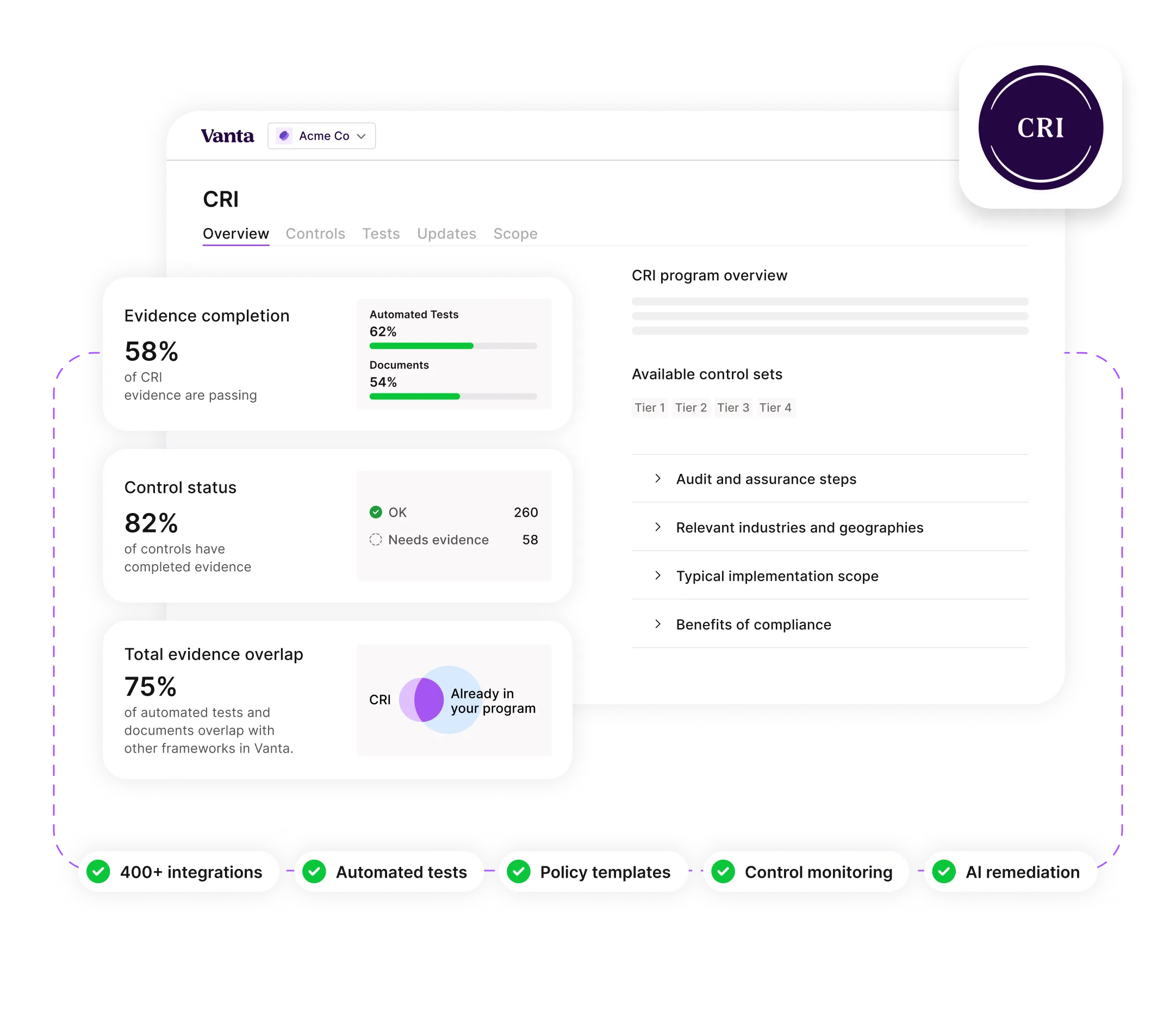
The trust management platform powering security for over [customer_count] customers
%20-%20White.svg)




Automate CRI alignment from day one
Connect Vanta to [integrations_count] tools like AWS, Azure, Okta, and SharePoint, and run 1,200+ automated tests. Vanta AI collects evidence, flags gaps, and suggests fixes, so you’re ready faster, with less manual work.
Automated, hourly tests that monitor controls, so you stay compliant every day—not just at audit time.
Integrations with your cloud, code, identity, and device tools for a complete, automated view of compliance.
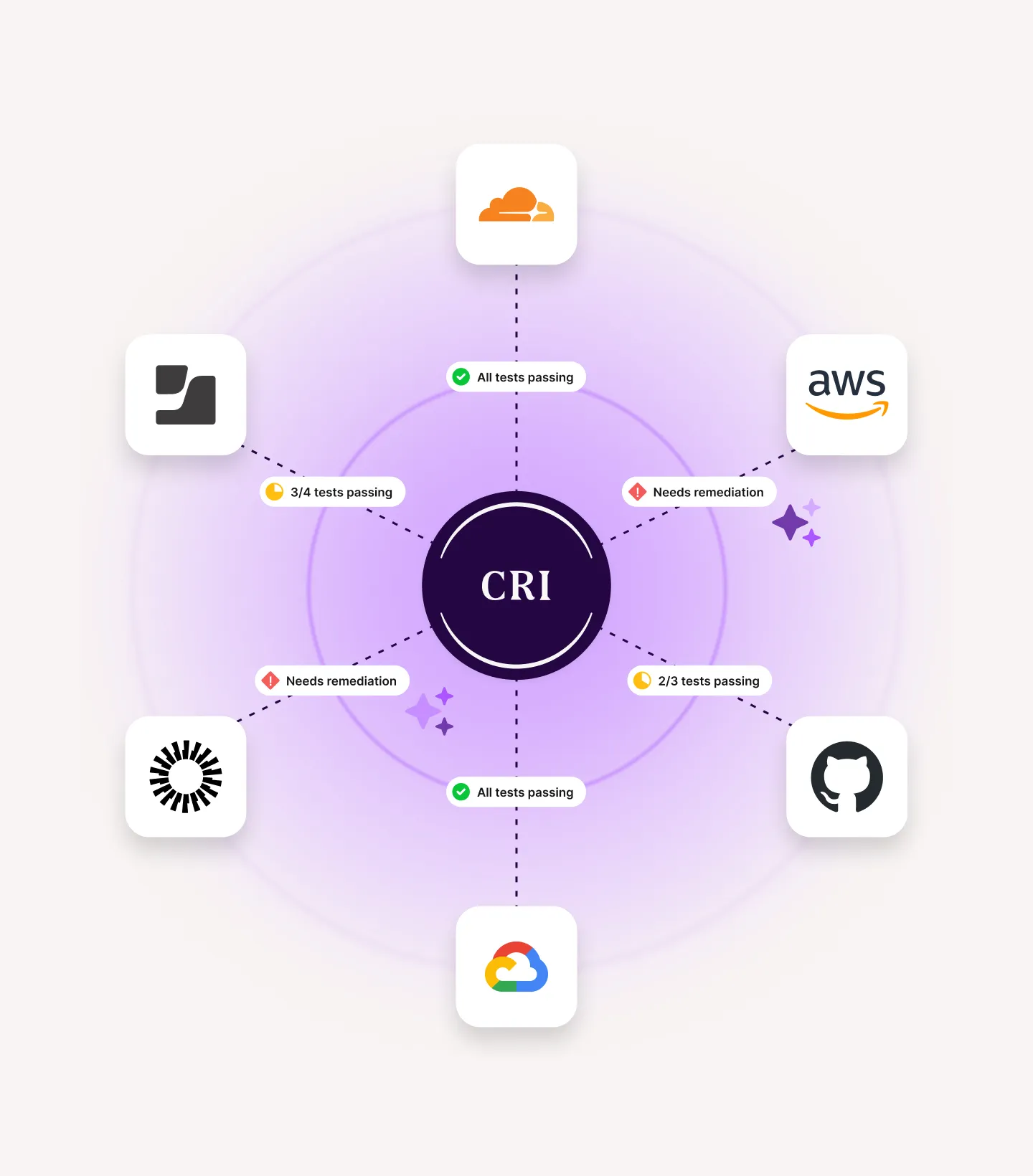
Customize CRI to fit your institution
CRI expectations scale across four tiers. With Vanta, you can tailor your scope by tier, product, or region. Vanta AI maps diagnostic statements, generates policies, and guides remediation, helping banks and fintechs align efficiently and confidently.
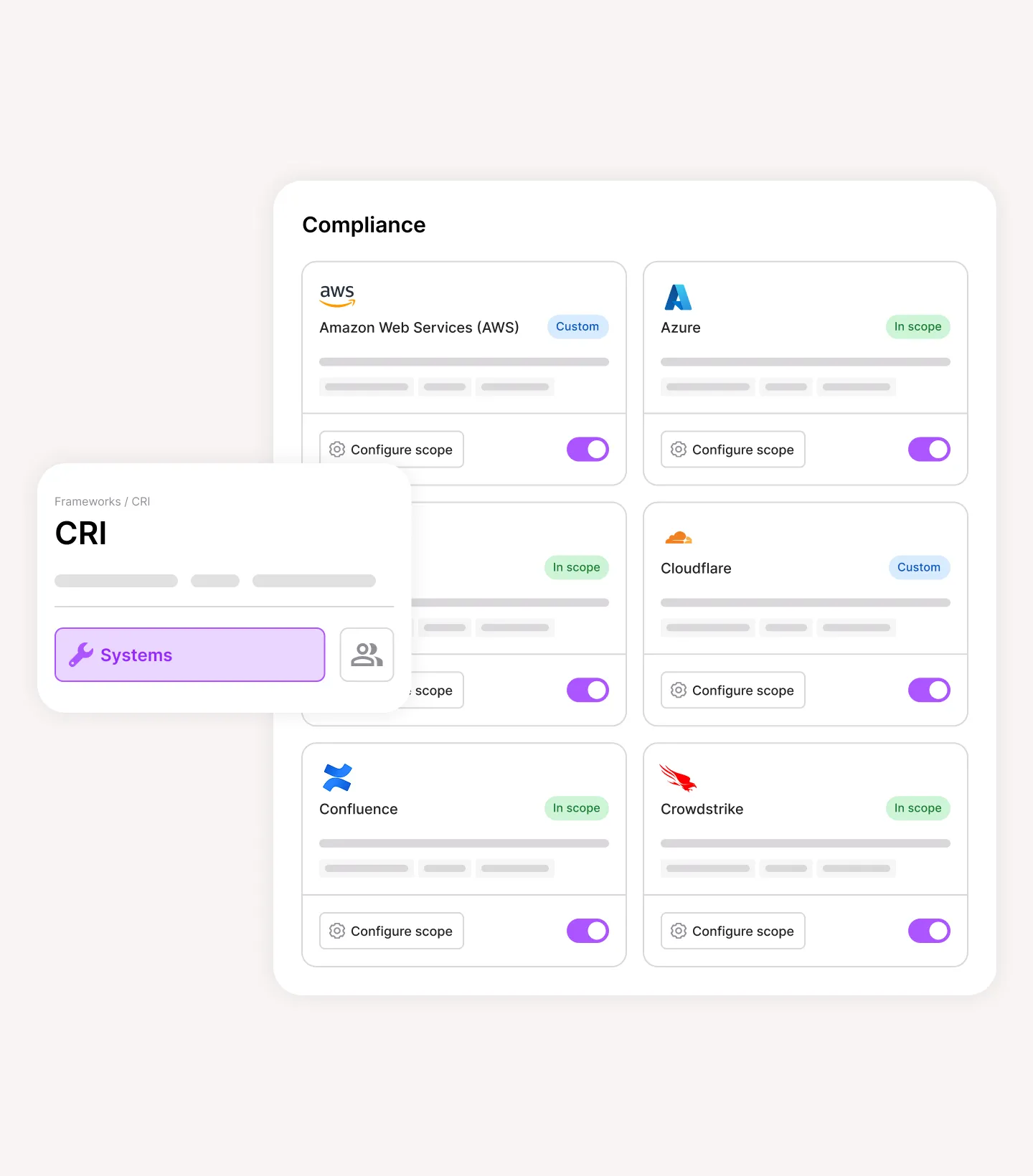
Stay exam-ready every day
CRI isn’t a one-time effort. Vanta continuously monitors your systems and turns CRI’s 318 diagnostic statements into guided workflows. Paired with AI-powered evidence checks and policy workflows, you can stay ready for supervisory exams.
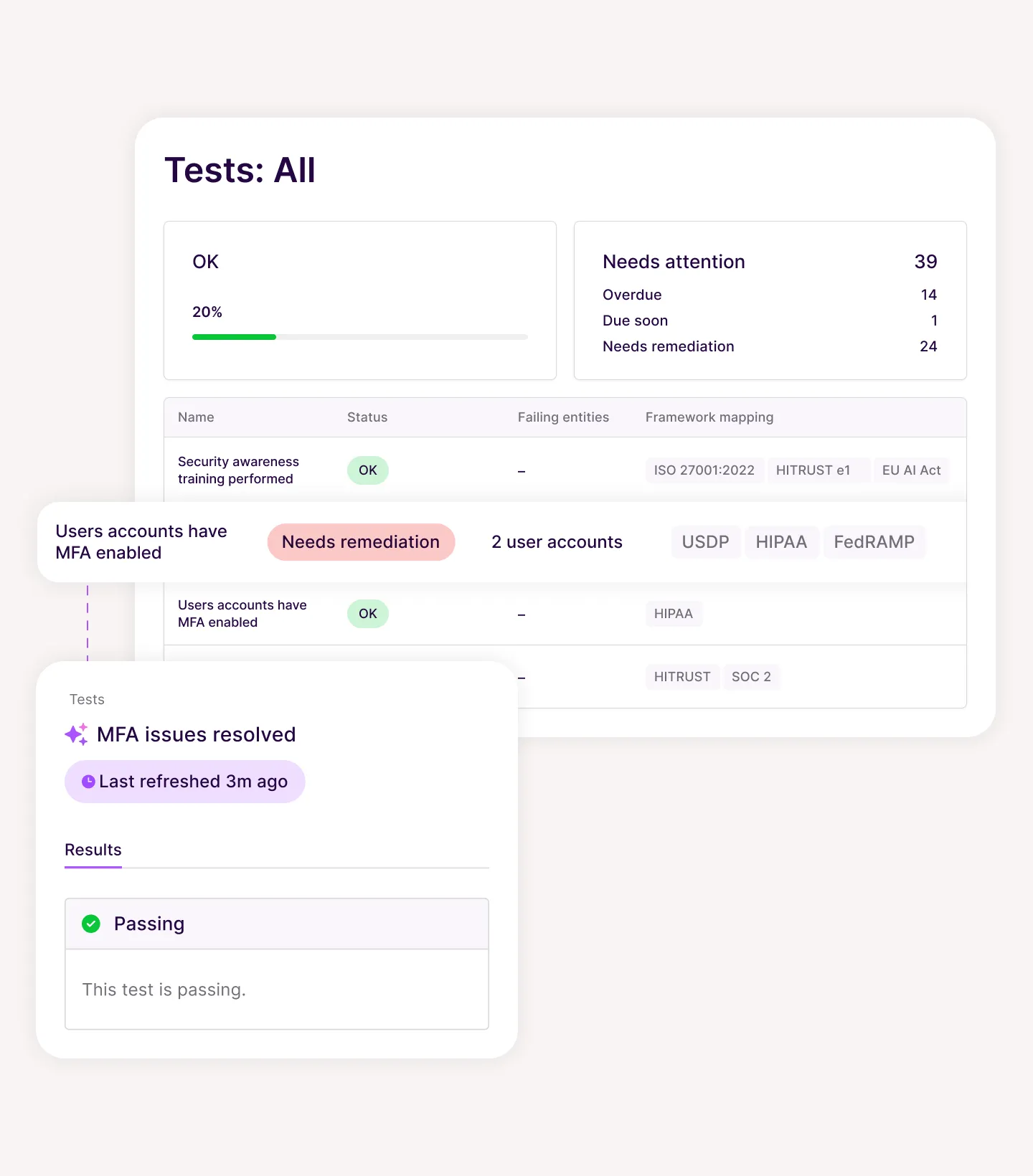
Scale beyond CRI
Reuse the work you’ve done for CRI across other frameworks like SOC 2, ISO 27001, NIST CSF 2.0, and DORA—without starting from scratch. See how much of each framework you’ve already covered so you can plan what’s next and move faster.
Pre-built controls
Translate diagnostic statements into actionable tasks with pre-built controls, AI-mapped policies, and risk scenarios.
Access reviews and requests
Automate access reviews and approval requests with real-time data to ensure only the right users have access to sensitive systems and tools.
Vendor risk management
Assess and monitor third-party vendors to align with CRI’s supply chain and dependency management requirements.
Risk management
Streamline risk reviews by assigning owners, tracking mitigations, and linking to CRI requirements.
Policy management
Use Vanta AI to draft and update policies faster, then launch and track employee acceptance with built-in, auditor-approved templates.
Trust center integration
Share CRI alignment through Vanta’s Trust Center, making it easier to demonstrate security to regulators, partners, and third parties.
Learn more about CRI

The Audit Ready Checklist
Get ready for your next audit with tips from Vanta’s team of GRC experts.

eBook: Fortifying Fintech: Security Must-Haves for Europe’s Trailblazers
Get our free guide to the biggest trends and challenges that fintechs face, how they can streamline security, and why good security means good business

eBook: Fortifying Fintech: Security Must-Haves for APAC’s Trailblazers
Get our free guide to the biggest trends and challenges that fintechs face, how they can streamline security, and why good security means good business
FAQ
Regulators have signaled the CAT is being retired and point firms to NIST CSF 2.0 and industry profiles like the CRI Profile. The cleanest path is: (1) right-size scope via CRI Impact Tiering, (2) migrate your CAT artifacts into CRI diagnostic statements, and (3) use mappings to show continuity for exam teams.
The CRI Profile is designed for the broader financial sector and their critical third-party providers. Many firms use it both for internal self-assessments and to streamline third-party risk due diligence.
The CRI Profile is a sector-specific distillation of NIST CSF, developed by the financial industry, for the financial industry. It builds on NIST CSF 2.0 but adds the detail regulators expect for financial institutions. Because it’s industry-led and well-recognized, examiners are accustomed to reviewing CRI outputs—especially when assessments are well-evidenced and mapped to controls.
Organizations determine their Impact Tier by completing CRI’s official Impact Tiering Questionnaire, available on the CRI website. The tier reflects the institution’s size, complexity, and systemic importance.
Impact Tier matters because it drives the scope of work: higher tiers require alignment with a greater volume of diagnostic statements, while lower tiers have fewer. In other words, your tier determines how many requirements you need to comply with — and therefore the level of effort to demonstrate alignment.
The CRI Profile unifies overlapping requirements from regulators like the FFIEC, OCC, and Federal Reserve in the U.S., DORA and the ECB in the EU, and APRA and MAS in APAC. It consolidates them into a single set of diagnostic statements mapped to actionable controls, helping firms prove readiness and resilience through one standardized framework recognized across jurisdictions.
%201%20(1).svg)




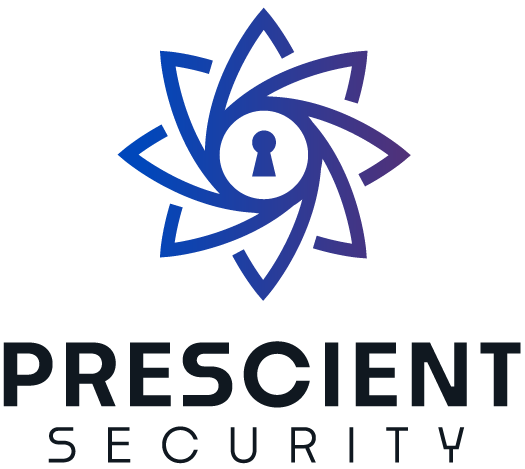


.png)
.png)
.png)